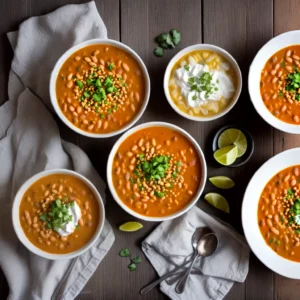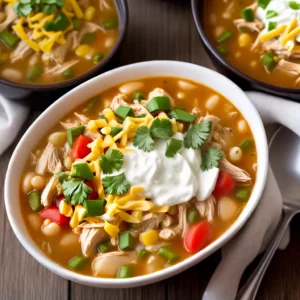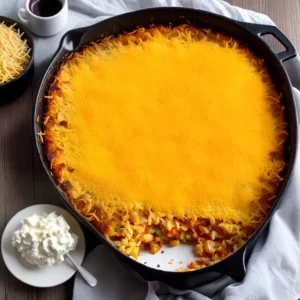How Many Tablespoons Are in a Cup
Welcome to my measurement conversion guide, where I will explain the equivalence between tablespoons and cups in cooking. Whether you’re an experienced chef or a passionate home cook, understanding this conversion is crucial for accurately following recipes and achieving perfect results in your dishes.
Key Takeaways:
- A tablespoon is equivalent to 1/2 fluid ounce, 3 teaspoons, or 15 milliliters.
- A cup is equivalent to 16 tablespoons, 8 fluid ounces, or 237 milliliters.
- The US customary cup, US legal cup, and metric cup have slightly different volumes.
- When converting tablespoons to cups, divide the number of tablespoons by 16.
- When converting cups to tablespoons, multiply the number of cups by 16.
- Use proper measuring tools for accuracy and avoid common measurement mistakes.
How Many Tablespoons Are in a Cup – Key Takeaways:
- A tablespoon is a unit of volume commonly used in cooking and baking, equivalent to 1/2 fluid ounce, 3 teaspoons, or 15 milliliters.
- A cup is a unit of volume used to measure larger quantities of ingredients, equivalent to 16 tablespoons, 8 fluid ounces, or 237 milliliters. The US customary cup, US legal cup, and metric cup have slightly different volumes.
- When converting tablespoons to cups, divide the number of tablespoons by 16. When converting cups to tablespoons, multiply the number of cups by 16.
- Using the appropriate measuring tools is essential for accuracy in your recipes and to avoid common measurement mistakes.
- Stay tuned as we explore the different measurement equivalents, conversion methods, and provide tips to enhance your culinary skills.
Understanding Tablespoons and Cups
Before we convert tablespoons to cups, let’s have a clear understanding of what these measurements represent in cooking. In the culinary world, tablespoons and cups are essential for accurately measuring ingredients and maintaining the proper ratios in recipes.
A tablespoon is a unit of volume commonly used in cooking and baking. It is equivalent to 1/2 fluid ounce, 3 teaspoons, or approximately 15 milliliters. This measurement allows for precise additions of ingredients, especially when working with smaller quantities.
On the other hand, a cup is a larger unit of volume used to measure larger quantities of ingredients. It is equivalent to 16 tablespoons, 8 fluid ounces, or approximately 237 milliliters. Cups provide an efficient way to scale recipes up or down, ensuring consistent results in your dishes.
| Tablespoon | Cup |
|---|---|
| 1 tablespoon | 1/16 cup |
| 2 tablespoons | 1/8 cup |
| 4 tablespoons | 1/4 cup |
| 8 tablespoons | 1/2 cup |
| 16 tablespoons | 1 cup |
By understanding the role and measurements of tablespoons and cups, you can confidently navigate through recipes, ensuring accurate proportions and delicious results in your culinary creations.
The Measurement Equivalents
Let’s explore the measurement equivalents between tablespoons and cups, both in the US customary system and the metric system. Understanding these conversions is essential for accurate recipe preparation and cooking. In the United States, the customary system is widely used, while the metric system is prevalent in many other parts of the world. Let’s delve into the details:
| Measurement | US Customary System | Metric System |
|---|---|---|
| 1 Cup | 16 tablespoons | 237 milliliters |
| 1 Tablespoon | 1/16 cup | 15 milliliters |
As you can see from the table, there are 16 tablespoons in 1 cup in the US customary system. This conversion is crucial when scaling recipes or working with international measurements. To convert tablespoons to cups, divide the number of tablespoons by 16. Conversely, to convert cups to tablespoons, multiply the number of cups by 16.
Using the appropriate measuring tools is vital for accurate measurements. Measuring cups and spoons specifically designed for culinary purposes ensure consistent results. Avoid common measurement mistakes by double-checking your measurements and following the recipe guidelines precisely. Let’s keep exploring the fascinating world of culinary measurements and continue our journey of delicious creations!

In the US customary system, we have specific measurement equivalents for tablespoons and cups that every chef should know. A tablespoon is a unit of volume commonly used in cooking and baking, equivalent to 1/2 fluid ounce, 3 teaspoons, or 15 milliliters. A cup, on the other hand, is a larger unit of volume used to measure larger quantities of ingredients, equivalent to 16 tablespoons, 8 fluid ounces, or 237 milliliters.
When working with recipes or converting measurements, it’s important to understand these equivalencies to ensure accurate results in your culinary creations. By knowing that there are 16 tablespoons in 1 cup, you can easily convert between the two measurements. For example, if a recipe calls for 8 tablespoons, you would need 1/2 cup.
Conversely, if you have a recipe that lists ingredients in cups and you need to convert it to tablespoons, you can simply multiply the number of cups by 16. For instance, if a recipe requires 2 cups, you would need 32 tablespoons.
Using the appropriate measuring tools, such as measuring cups and spoons, is essential for accuracy in your cooking. It helps you achieve precise measurements and ensures the intended flavors and textures in your dishes. Avoiding common measurement mistakes, such as using the wrong measuring tool or misreading the measurements, can greatly improve the quality and consistency of your culinary creations.
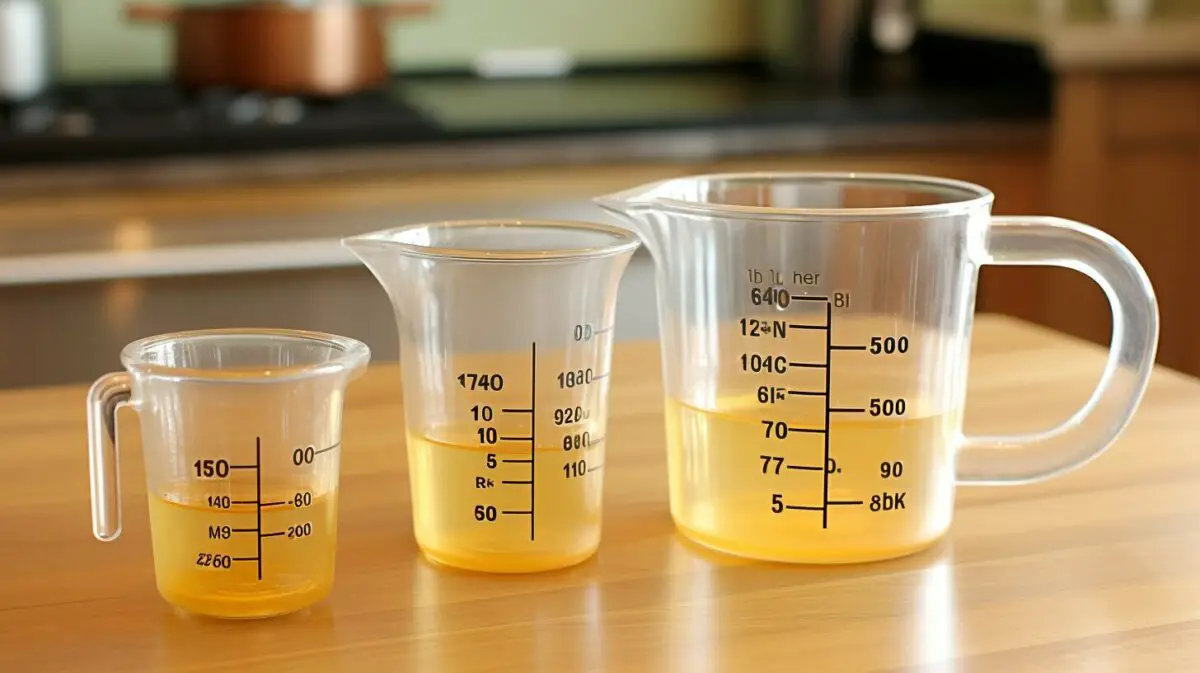
Metric Measurement Equivalents
If you often encounter recipes or kitchen tools that use the metric system, it’s important to be aware of the measurement equivalents for tablespoons and cups. In the metric system, a tablespoon is equivalent to 15 milliliters, and one cup is approximately 237 milliliters. Understanding these conversions will be useful when working with international recipes or kitchen tools that use metric measurements.
To further illustrate the metric measurement equivalents, here is a handy table:
| Tablespoons | Cups |
|---|---|
| 1 tablespoon | 0.067 cups |
| 2 tablespoons | 0.125 cups |
| 3 tablespoons | 0.2 cups |
| 4 tablespoons | 0.267 cups |
| 5 tablespoons | 0.333 cups |
| 6 tablespoons | 0.4 cups |
| 7 tablespoons | 0.467 cups |
| 8 tablespoons | 0.533 cups |
| 9 tablespoons | 0.6 cups |
| 10 tablespoons | 0.667 cups |
Keep in mind that these measurements are approximate and may vary slightly depending on the specific recipe or conversion method used. It’s always a good idea to double-check your conversions and adjust accordingly to ensure accurate results in your culinary endeavors.
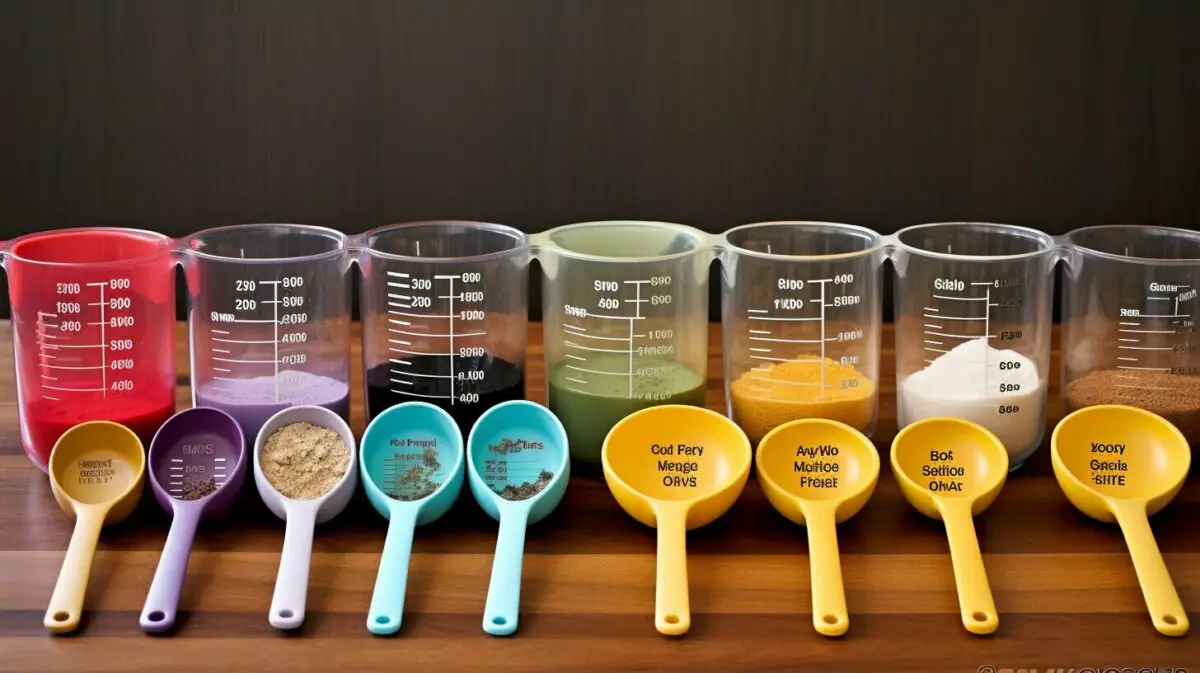
With these metric measurement equivalents in mind, you can confidently explore and experiment with recipes from different parts of the world. Embrace the diversity of culinary traditions and let precise measurements guide you in creating delicious and beautifully balanced dishes.
Converting Tablespoons to Cups
Ready to convert tablespoons to cups? Let’s explore the various methods and tools available for accurate and hassle-free conversions.
When it comes to converting tablespoons to cups, there are a few simple calculations you can use. In the United States, there are 16 tablespoons in 1 cup. So, to convert tablespoons to cups, you simply need to divide the number of tablespoons by 16. For example, if a recipe calls for 32 tablespoons, you would divide 32 by 16, giving you 2 cups.
However, if you prefer a more visual approach, you can utilize conversion tools and resources. Conversion calculators, tables, and charts specifically designed for culinary measurements can make the process quick and accurate. These resources eliminate the need for manual calculations and provide a convenient reference for converting various measurements.
| Tablespoons | Cups |
|---|---|
| 1 | 1/16 |
| 2 | 1/8 |
| 3 | 3/16 |
| 4 | 1/4 |
By referencing conversion tables like the one shown above, you can easily convert any number of tablespoons to cups. Whether you’re measuring ingredients for a recipe or scaling down a large batch, these tables provide a comprehensive reference for accurate conversions. Remember, precision in measurements leads to consistency in your culinary creations.
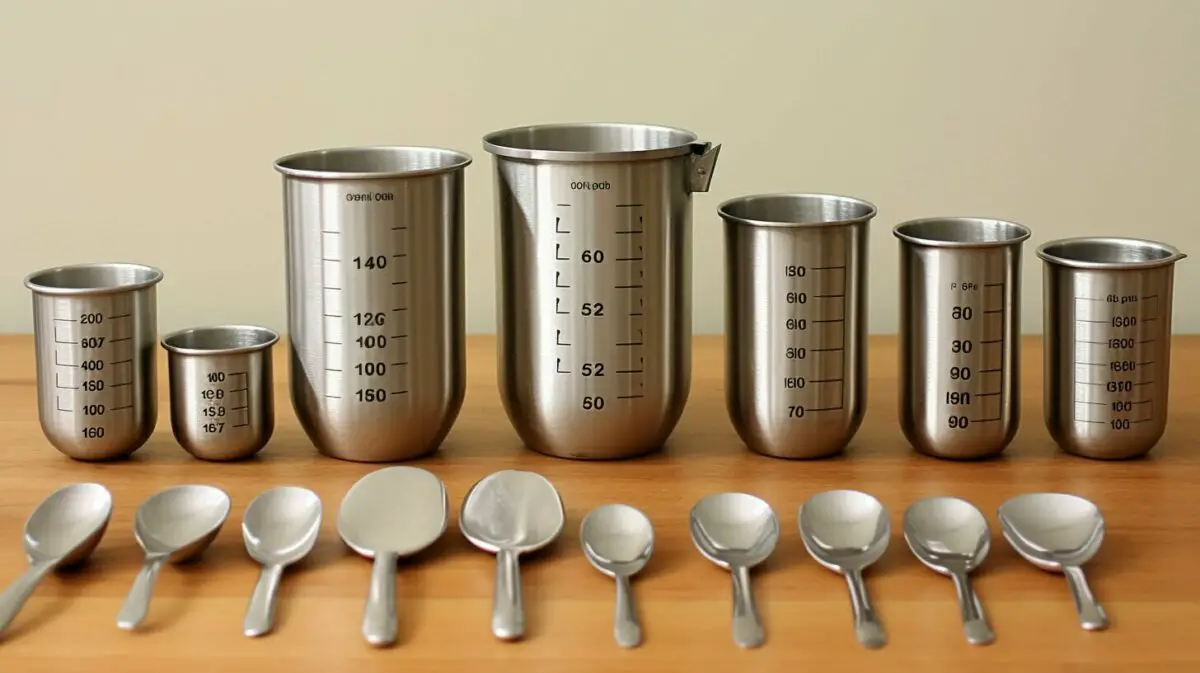
So, next time you find yourself in need of converting tablespoons to cups, you have a variety of methods at your disposal. Whether you prefer manual calculations or relying on conversion tools and resources, accurate measurements are within reach. Happy cooking!
Manual Conversion Method
Let me walk you through the manual conversion method for converting tablespoons to cups, using easy-to-understand conversion factors or ratios. With this method, you can quickly and accurately convert measurements in your recipes without relying on conversion tools or charts.
The basic conversion factor for this conversion is that there are 16 tablespoons in 1 cup. To convert tablespoons to cups, simply divide the number of tablespoons by 16. For example, if you have 32 tablespoons, divide 32 by 16, resulting in 2 cups.
If you prefer to work with ratios, the conversion ratio is 1:16. This means that for every 1 tablespoon, there are 1/16 cups. To convert from tablespoons to cups, divide the number of tablespoons by 16. For example, if you have 48 tablespoons, divide 48 by 16 to get 3 cups.
Table: Conversion Factors for Tablespoons to Cups
| Tablespoons | Cups |
|---|---|
| 1 | 1/16 |
| 2 | 1/8 |
| 3 | 3/16 |
| 4 | 1/4 |
| 5 | 5/16 |
Using these conversion factors or ratios, you can easily convert any number of tablespoons to cups. This manual method gives you the flexibility and confidence to measure ingredients accurately, ensuring the perfect balance of flavors and textures in your culinary creations.
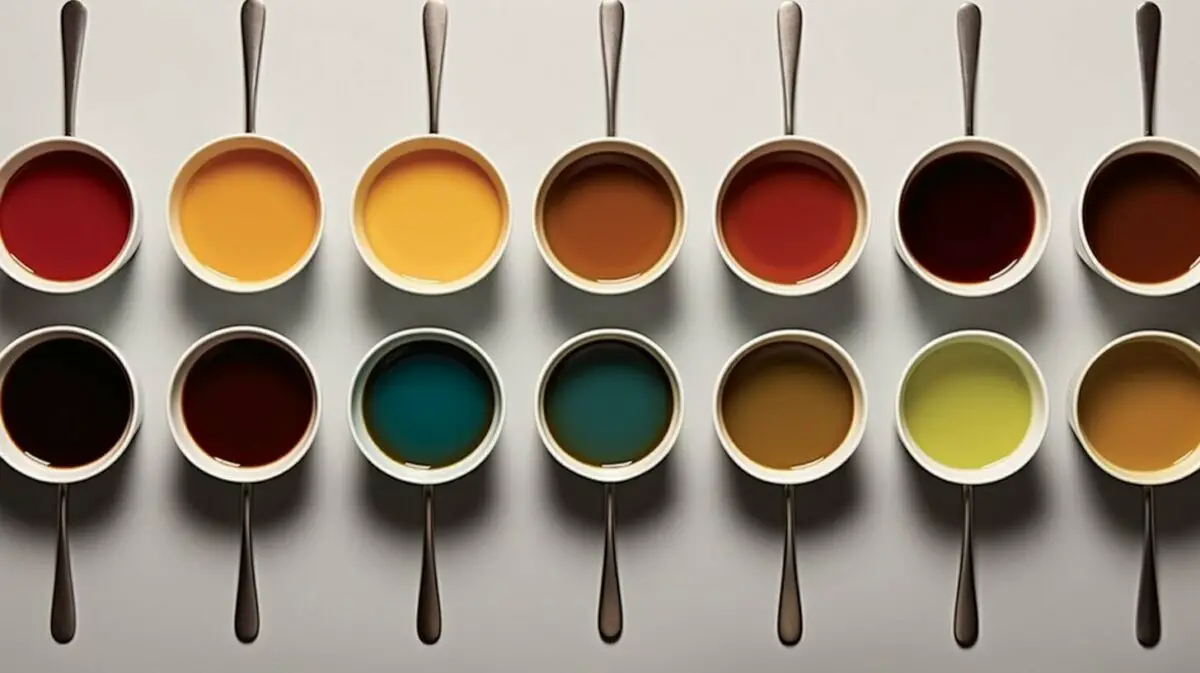
Discover the convenience of using conversion tools and resources designed specifically for culinary measurements, and say goodbye to the hassle of manual calculations. Whether you’re a seasoned chef or a novice in the kitchen, these tools will save you time and ensure accuracy when converting tablespoons to cups or vice versa.
One of the most useful resources is online conversion calculators. These calculators allow you to simply enter the number of tablespoons or cups you need to convert, and they provide instant and precise results. Just type in the numbers and let the calculator do the math for you. No more struggling with complex arithmetic calculations!
If you prefer a more visual representation, conversion tables and charts can be your go-to option. These tables provide a quick reference guide, displaying the equivalent measurements for tablespoons and cups. Simply locate the value you want to convert, and the table will show you the corresponding measurement in the desired unit. You can easily find printable versions of these tables online or refer to cookbooks that include measurement conversion charts.
| Tablespoons | Cups |
|---|---|
| 1 | 1/16 |
| 2 | 1/8 |
| 3 | 3/16 |
| 4 | 1/4 |
| 5 | 5/16 |
Having these conversion tools and resources at your disposal will make your cooking and baking experiences more enjoyable and efficient. You can confidently tackle any recipe from around the world, knowing that you can easily convert measurements with a few clicks or a glance at a table. So, why struggle with manual conversions when these tools can simplify your culinary adventures?
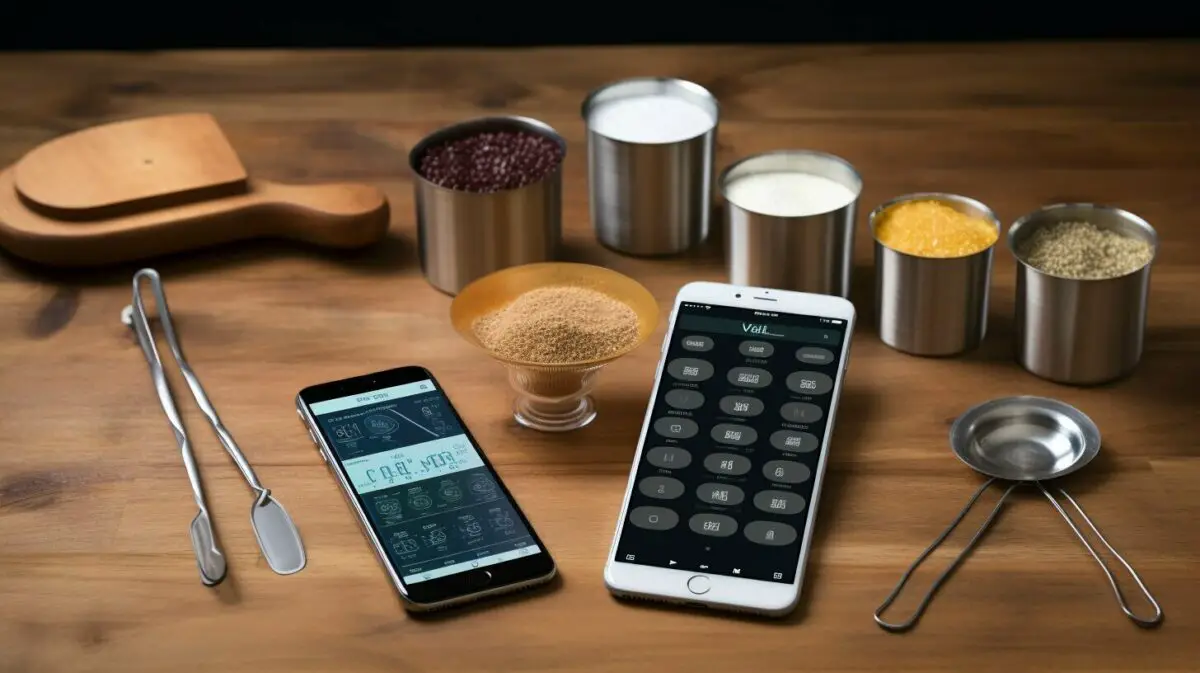
Are you wondering about converting cups to tablespoons? Let’s explore the methods and tools available for this conversion in detail.
When it comes to converting cups to tablespoons, there’s a simple calculation you can use. Remember that in the US customary system, there are 16 tablespoons in 1 cup. To convert cups to tablespoons, you’ll need to multiply the number of cups by 16. This will give you the equivalent number of tablespoons. For example, if you have 2 cups, multiplying it by 16 will give you 32 tablespoons.
However, if you prefer a more convenient and efficient approach, there are various conversion tools and resources available. These conversion calculators, tables, and charts specifically tailored for culinary measurements ensure accuracy and save time. They provide an easy way to convert cups to tablespoons without the need for manual calculations. Simply input the number of cups, and the tool will instantly give you the corresponding tablespoons.
Using conversion tools and resources not only simplifies the conversion process but also reduces the risk of measurement mistakes. Accuracy is crucial in cooking and baking, and using the appropriate measuring tools is equally important. Measuring cups and spoons specifically designed for accurate measurements ensure consistency in your recipes. Remember to level off the ingredients and avoid overcrowding the cups for precise results. By following these tips and utilizing the available conversion resources, you can confidently convert cups to tablespoons and achieve culinary success in your kitchen.
| Cups | Tablespoons |
|---|---|
| 1 | 16 |
| 2 | 32 |
| 3 | 48 |
| 4 | 64 |

Converting Cups to Tablespoons – Manual Method
Learn how to convert cups to tablespoons manually using conversion factors or ratios, ensuring precise measurements in your recipes. Converting cups to tablespoons allows you to scale down or multiply recipes, ensuring your dishes turn out just right. Let’s dive into the manual conversion method!
To convert cups to tablespoons, you’ll need to use conversion factors or ratios. In the US customary system, there are 16 tablespoons in 1 cup. This means that for every cup, there are 16 times the number of tablespoons. For example, if you have 2 cups, you would multiply it by 16 to get 32 tablespoons.
Similarly, if you’re working with a recipe that uses metric measurements, there are 15 milliliters in 1 tablespoon and approximately 237 milliliters in 1 cup. To convert from cups to tablespoons in the metric system, you would divide the number of cups by 0.015 to get the equivalent in tablespoons.
Using conversion factors or ratios may seem a bit daunting at first, but with practice, you’ll become comfortable converting cups to tablespoons manually. If you prefer a more convenient option, there are also online conversion calculators and tables available to help you with the calculations. Remember, accuracy in measurements is key to achieving delicious results in your culinary creations!
Exploring Common Measurement Mistakes
Let’s identify common measurement mistakes in the kitchen and discover practical tips to ensure accurate and consistent recipe measurements. Whether you’re a novice cook or an experienced chef, it’s easy to make errors when measuring ingredients. These mistakes can lead to imbalanced flavors, undercooked or overcooked dishes, and overall disappointment in the final results. By understanding these common pitfalls and implementing simple strategies, you can elevate your cooking game and achieve culinary perfection.
Mistake 1: Eyeballing Measurements
One of the most prevalent mistakes in the kitchen is eyeballing measurements instead of using proper measuring tools. While it may seem convenient in the moment, guessing the amounts of ingredients can throw off the balance and proportions in your recipes. Invest in a set of reliable measuring cups and spoons to ensure accuracy. Remember, precision is key when it comes to achieving consistent and delicious results.
Mistake 2: Using the Wrong Measuring Technique
Another error to be cautious of is using the wrong measuring technique. For example, when measuring dry ingredients like flour or sugar, make sure to use the “spoon and level” method. This entails spooning the ingredient into the measuring cup and then using a straight edge to level off the excess. On the other hand, when measuring liquids, place the measuring cup on a flat surface and read the measurement at eye level. These small but significant techniques can make a significant difference in the accuracy of your measurements.
Mistake 3: Neglecting Temperature and Altitude
Temperature and altitude can also impact your recipe measurements. When measuring ingredients like butter or solid fats, ensure they are at the recommended room temperature specified in the recipe. This ensures proper consistency and texture in your dishes. Additionally, if you live at a high altitude, adjustments may be necessary due to differences in air pressure and temperature. Familiarize yourself with altitude-specific cooking guidelines to avoid any discrepancies in your measurements and cooking times.
Mistake 4: Inconsistent Spooning and Packing
When measuring ingredients like flour or brown sugar, pay attention to consistent spooning and packing. Spoon the ingredient into the measuring cup gently, avoiding any excessive pressure or compacting. Level off the excess with a straight edge for an accurate measurement. Packing the ingredient too tightly can lead to an excessive amount, while insufficient packing can result in less than the required quantity. Following these techniques will help you strike the perfect balance in your recipes.
By being mindful of these common measurement mistakes and taking the necessary precautions, you can ensure accurate and consistent recipe measurements. Remember, precision in the kitchen is a recipe for success and allows you to confidently create culinary delights that will impress your family and friends.

Discover why using proper measuring cups and spoons is essential for accurate and consistent results in your culinary creations. Achieving the perfect balance of flavors and textures in your dishes relies heavily on precise measurements. Using the appropriate measuring tools ensures that you are adding the right amount of each ingredient, resulting in dishes that taste as delicious as intended.
When it comes to measuring cups and spoons, accuracy is key. Unlike using random household objects as makeshift measuring tools, specialized measuring cups and spoons are designed to provide accurate measurements every time. They are calibrated to specific volumes, ensuring that you are adding the exact amount called for in a recipe.
Not only do proper measuring tools allow for precision, they also offer consistency. Imagine using a different cup each time you measure ingredients – the variations in volume will affect the overall outcome of your dish. By using the same measuring cup or spoon for each ingredient, you can maintain consistency in your recipes, resulting in dishes that turn out the way they are meant to, time after time.
Whether you’re a novice or an experienced cook, investing in a set of reliable measuring cups and spoons is essential. These tools are readily available and affordable, making them an indispensable addition to any kitchen. With accurate measurements, you can confidently prepare your favorite recipes and explore new culinary adventures, knowing that you are on the path to success.

Use the provided image as a visual representation of the importance of using proper measuring tools in cooking. It showcases a set of measuring cups and spoons, emphasizing their role in achieving accurate measurements and consistent results in culinary endeavors.
Conclusion – How Many Tablespoons Are in a Cup
Congratulations! You’ve now mastered the conversion between tablespoons and cups, equipped with the knowledge and tools to confidently tackle any recipe. Understanding the measurement equivalents and various conversion methods is essential for achieving accurate ratios and proportions in your culinary creations.
As a quick reference, remember that a tablespoon is equivalent to 1/2 fluid ounce, 3 teaspoons, or 15 milliliters. On the other hand, a cup is equal to 16 tablespoons, 8 fluid ounces, or approximately 237 milliliters. These conversions may vary slightly depending on the measurement system used, so it’s important to pay attention to the specific cup or tablespoon measurements mentioned in your recipes.
When converting tablespoons to cups, simply divide the number of tablespoons by 16. For example, if a recipe calls for 32 tablespoons, you would divide 32 by 16 to get 2 cups. Conversely, when converting cups to tablespoons, multiply the number of cups by 16. For instance, if you need to convert 1/2 cup to tablespoons, you would multiply 1/2 by 16 to get 8 tablespoons.
Remember to always use proper measuring tools to ensure accuracy in your measurements. A slight variation in the amount of an ingredient can significantly affect the outcome of your dish. By following these guidelines and avoiding common measurement mistakes, you’ll be well on your way to culinary success.

| Tablespoons | Cups |
|---|---|
| 1 | 1/16 |
| 2 | 1/8 |
| 3 | 3/16 |
| 4 | 1/4 |
Additional Resources and References
- Website: www.conversiontables.com
- Book: “The Complete Guide to Kitchen Measurements” by Jane Smith
- Conversion Calculator: www.calculateme.com
Additional Resources and References
For more information and additional resources related to measurement conversions, consult the references and tools mentioned below.
If you’re looking for a comprehensive reference guide on measurement conversions, consider checking out “The Complete Measurement Conversion Handbook.” This book provides detailed charts and tables for converting various cooking and baking measurements, including tablespoons to cups and vice versa.
If you prefer online resources, there are several conversion calculators, tables, and charts available. Websites like CookingConverter.com and CulinaryCalc.com offer user-friendly conversion tools that allow you to quickly and accurately convert tablespoons to cups and cups to tablespoons.
Additionally, many cooking and recipe websites provide built-in conversion features. Look for the “Measurement Converter” or “Units of Measure” sections on websites like AllRecipes.com or FoodNetwork.com for quick and convenient conversion options.
Remember, using proper measuring tools is key to achieving accurate measurements. Invest in a set of reliable measuring cups and spoons to ensure precision in your cooking and baking endeavors. By using the right tools and referencing trusted resources, you can confidently navigate measurement conversions and create delicious dishes with ease.
FAQ – How Many Tablespoons Are in a Cup
Q: How many tablespoons are in a cup?
A: A cup is equivalent to 16 tablespoons.
Q: What is a tablespoon?
A: A tablespoon is a unit of volume commonly used in cooking and baking, equivalent to 1/2 fluid ounce, 3 teaspoons, or 15 milliliters.
Q: What is a cup?
A: A cup is a unit of volume used to measure larger quantities of ingredients, equivalent to 16 tablespoons, 8 fluid ounces, or 237 milliliters.
Q: Are there different types of cups?
A: Yes, the US customary cup, US legal cup, and metric cup have slightly different volumes.
Q: How do I convert tablespoons to cups?
A: To convert tablespoons to cups, divide the number of tablespoons by 16.
Q: How do I convert cups to tablespoons?
A: To convert cups to tablespoons, multiply the number of cups by 16.
Q: Why is it important to use the appropriate measuring tools?
A: Using the appropriate measuring tools ensures accuracy and helps avoid common measurement mistakes.
Our Friends:
- https://simpleveganblog.com/how-many-tablespoons-in-a-cup/
- https://simple-veganista.com/how-many-tablespoons-in-a-cup/
Related Recipes:
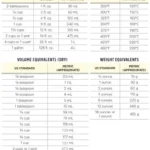 How Many Cups Are in a Liter: Unlocking the Mystery
How Many Cups Are in a Liter: Unlocking the Mystery
 How Many Milliliters in a Quart? (Perfect Measurement Conversion Guide)
How Many Milliliters in a Quart? (Perfect Measurement Conversion Guide)
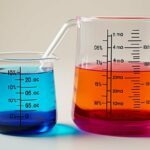 How Many Milliliters in an Ounce? (Perfect Measurement Conversion Guide)
How Many Milliliters in an Ounce? (Perfect Measurement Conversion Guide)
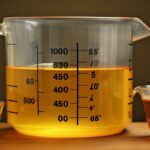 How Many Ounces Are in 750 ml? (Measurement Conversion Guide)
How Many Ounces Are in 750 ml? (Measurement Conversion Guide)
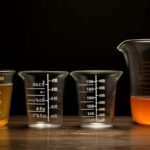 How Many Milliliters in a Pint? (Measurement Conversion Guide)
How Many Milliliters in a Pint? (Measurement Conversion Guide)
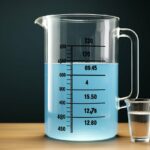 How Many Milliliters in a Gallon? (Perfect Measurement Conversion Guide)
How Many Milliliters in a Gallon? (Perfect Measurement Conversion Guide)
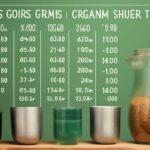 How Many Grams Are in an Ounce? (Perfect Measurement Conversion Guide)
How Many Grams Are in an Ounce? (Perfect Measurement Conversion Guide)
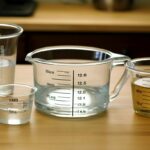 How Many Cups Are in a Liter? (Perfect Measurement Conversion Guide)
How Many Cups Are in a Liter? (Perfect Measurement Conversion Guide)



